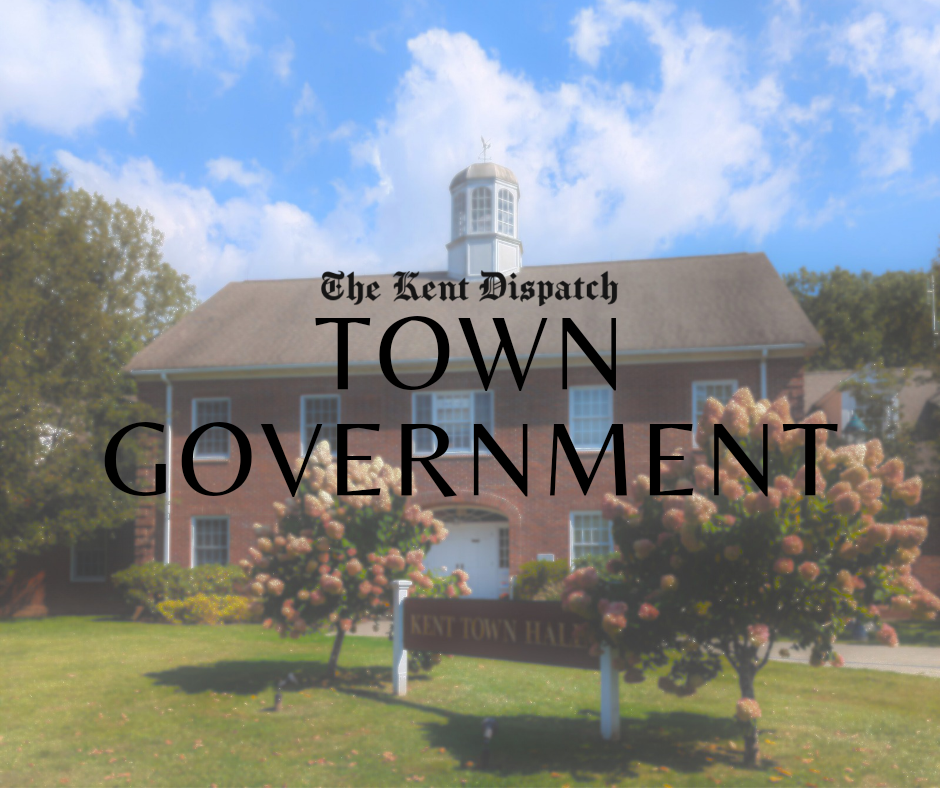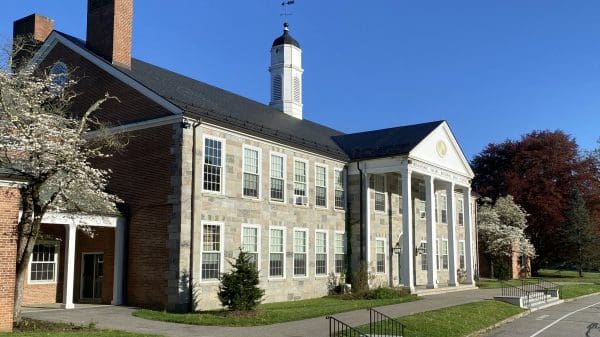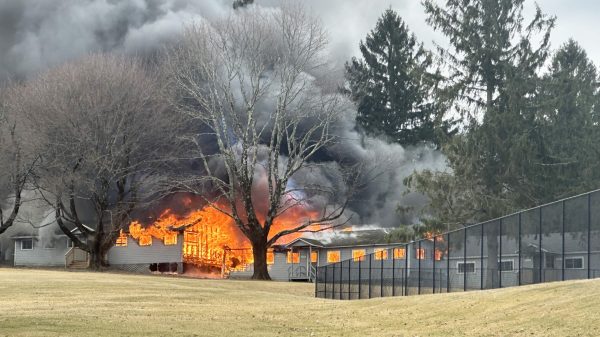KENT, Conn.—Kent, which has experienced seasonal flooding along the Housatonic River when spring ice floes break up, is nevertheless in little danger from dam failures, according to engineers from the Department of Energy and Environmental Protection (DEEP).

The engineers met in early February via Zoom with members of the Conservation Commission to present a program on dam safety regulations.
The commission requested the presentation because of climatic changes that have brought heavy rainfalls and damaging flooding in some areas of the state.
Members wanted to know whether rules for dam maintenance and surveillance are likely to become more rigorous in the future.
Commission member Wendy Murphy noted that with climate change and alternations of land use patterns, over time it is likely the region will experience more sudden and powerful storms.
“Extreme precipitation events have risen by nearly 60 percent since 1950s, according to some sources,” she observed. “We want to know if there is something we can do to be better prepared.”
Civil engineer Lariab Afzaal explained that in Connecticut a dam is a barrier of “any kind whatsoever” that controls the flow of water or impounds it. Each dam has a unique identification number with the state, a hazard classification, a record of physical data, and data on the owner.
She displayed an inventory map speckled with the 4,800 known Connecticut dams.
It is the dam’s owner who is responsible to maintain it in a safe condition. The owner must register his dam with the DEEP and is financially responsible for damage caused by its failure.
“Dams deteriorate over time,” she said, noting that pipes age and break down, and that erosion, cracking and lowering of the crest occur.
“Condition can range from good to unsatisfactory,” she said. “We suggest owners review the condition of their dams.”
Dam hazard classifications range from AA, the failure of which would cause little economic damage, to Class C, a high-hazard dam that, if it were to fail, would result a probable loss of life, major damage to habitable structures and utilities and roadways.
“The classification is decided by what lies downstream,” said Afzaal, “not on the area of impoundment. A new development might change a classification.”
Because a lot can change below a dam, the regulations call for a regular inspection schedule. Class A dams are inspected every 10 years, Class BB every seven years; Class B, every five years, and Class C, every two years.
Owners must hire professional engineers, who submit reports, and the owners can be ordered to make dam repairs. They must provide an emergency action plan, a procedure that will be followed if there is a failure.
Fortunately for Kent landowners, there are no Class B or C dams in town. The highest classification is BB, a moderate threat level. If a BB dam fails it would result in possible damage to unoccupied storage structures, to paved local roadways and moderate economic loss.
Afzaal said the state is not approving construction of new dams unless they are for flood water storage. DEEP can, however, give emergency authorization for repairs if there is a dam failure that washes out a road. She said there were a record number of emergency authorizations in 2024.
When an owner applies for a dam safety permit, he or she does not need to go through Inland Wetlands. The program does not provide funding for removal or repairs but does provide referrals for landowners. The state does not regulate anything related to beaver activity.
Murphy said Kent has 44 listed ponds, about 25 percent of which “don’t even have a classification. There is a huge gap between what is asked by your office and actual practice. I don’t think we know about these things and consequently don’t follow the rules.”
“When we come across dams, we ask that the owners register them,” said DEEP civil engineer Anna Laskin, adding that, by law, property owners are required to disclose the presence of a dam when selling the land. “It’s a fairly new change, but we did start getting many calls from prospective buyers about their potential financial obligation,” she reported.
Conservation Commission Chairman Jean Speck speculated that some property owners might not be aware of dams on their properties.
“That’s very unlikely,” said Laskin. “Even dam owners of negligible impact dams has to file the notification. We’ve reached out to all known property owners, but we keep on finding smaller dams.”
Connie Manes asked about educational materials for owners of Class AA dams as to healthy maintenance techniques and impact on watersheds.
Afzaal said the DEEP has no regulations for AA dams, but Laskin said it is advisable to keep woody vegetation off the dams and to prevent larger trees from taking root.




































